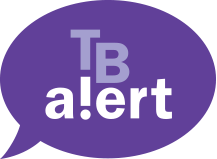A B C D E F G H I J K L M N O P Q R S T U V W X Y Z
| Incidence |
The number of new cases of a disease in a population over a period of time: normally expressed as number of cases per 100,000 population annually. |
||
| Immune system | The body’s defence system against outside attackers. The immune system fights off infection and retains memory cells that will protect against future attack. | ||
| Incubation period | The interval between infection and the development of clinically evident disease. | ||
| Influenza-like syndrome | A side effect of rifampicin. Paradoxically, it is more common when rifampicin is given twice or three times a week than when given daily. | ||
| Initial drug resistance | See primary drug resistance. | ||
| Intensified case finding | Strategies to identify and treat people with TB who do not present to healthcare facilities on their own initiative. This includes: regular screening of all people with HIV or at high risk of HIV; screening of people living and working in congregate settings – where TB is more likely to spread – such as mines or prisons; screening household contacts of people already diagnosed with TB. | ||
| Interleukins | Literally ‘between white cells’, these are cytokines that have been well characterised and allocated numbers. Many are involved in immune responses in tuberculosis. | ||
| Isoniazid | A synthetic agent and one of the first line anti-tuberculosis drugs. It is particularly effective against actively replicating bacilli in the lung cavities. It is also used for preventive therapy in those with latent tuberculosis. | ||
| Isoniazid preventive therapy (IPT) | Isoniazid preventive therapy can be used alongside antiretrovirals to further reduce the risk of TB in HIV-infected persons. PLHIV should be screened for active TB and started on either TB treatment or isoniazid preventative therapy as appropriate. |
